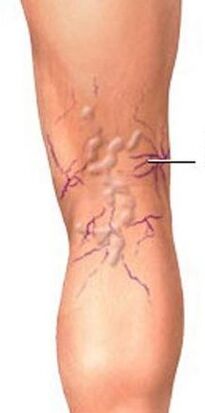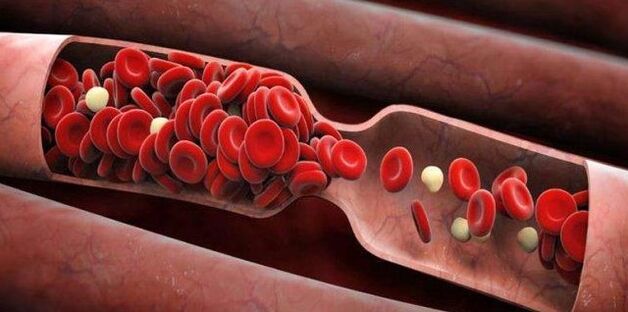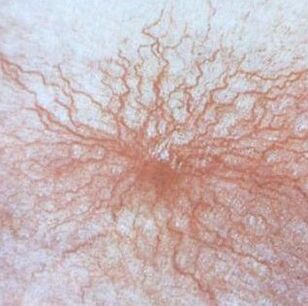Varicose veins are a pathological process that is characterized by an increase in the lumen of blood vessels that provide blood flow, thinning of their walls and deformation to the formation of nodes and tears. For anatomical reasons, the disease is most often found in the veins of the lower limbs.

External signs of varicose veins are not an extremely aesthetic problem: vascular "stars" that protruding a dark shade - just symptoms of circulatory disorders that are filled with consequences of life.
The mechanism of the development of varicose veins of the legs
The mechanism of development of varicose veins is associated with a decrease in the functionality of venous valves. Therefore, they are subject to high mechanical stress, under the influence of genetic factors, hormonal jumps, inflammation in the tissues of the lower limbs and loads, weaken and do not prevent the opposite flow of blood. Inflammation occurs against the background of stagnant phenomena associated with high blood viscosity, hypodynamia, or prolonged stay in a position or sitting position.
The pressure of the excessive volume of blood on the walls of the veins deforms them, depriving the functionality of the muscle and the nervous venous wall, which provide its stable tone. Blood stagnation, exceptional blood vessels and inflammation of their walls often lead to the formation of blood cell accumulations that overlap the lumen of the veins.
Therefore, varicose veins on the legs are not a superficial problem associated with mechanical damage to the subcutaneous vessel or temporary phenomena, but a deeper blood disorders that develop in the patient's tendency to the disease under the influence of risk factors.
The medical therapy of the disease is aimed at:
- Toning the walls of blood vessels;
- elimination of inflammation;
- blood liquefaction;
- Prevention of blood clots.
In the absence of adequate treatment, what is dangerous for varicose veins of the lower limbs can become a reality for any of the patients with this disease.
In 80% of cases, women suffer from varicose veins on the legs. The main thing that is dangerous varicose veins in women is the likelihood of early development of the disease due to hormonal jumps during puberty or pregnancy. Only gentle therapy that has no teratogenic effect is possible. Extra severity of the legs, lack of intensive treatment and exercise during attempts can stimulate the worsening of the disease.
What threatens varicose veins?
As a rule, thrombophlebitis and other dangerous effects of varicose veins occur at the 3rd stage of venous insufficiency. Symptoms of late stages of vascular failure:
- constant weight in the legs;
- swelling;
- The darkening of the skin in the ankle area.

Dermatitis, eczema and inflammation of the skin cause impaired circulation in the limbs.
Telengectasia is the least dangerous consequence of venous insufficiency. The condition is characterized by the appearance of vascular "nets" and "stars", which are accompanied by edema, fatigue of the legs, regular appearance of a feeling of tingling and nighttime seizures in caviar. Aesthetic defect is one of the reasons women often turn to a phlebologist in the early stages of varicose veins. In an attempt to save their feet beautiful, patients take care of their health.
Subcutaneous bleeding and gaps of veins
Thrombophlebitis - thrombosis against the background of inflammation of the venous wall and stagnation of blood in an enlarged vessel. The disease developed is characterized by the sealing and pain of palpation (drilling) of the affected vessel, as well as redness of the skin around the thrombus. Thrombophlebitis develops about 25% of patients who have diagnosed varicose veins. Blood clots, which are in the superficial veins, have a low risk of excretion to the health, but in case of promotion of a blood clot on a subcutaneous or perforated vessel, immediate hospitalization is required.
Deep thrombosis is much more dangerous than varicose veins and thrombophlebitis. Blood clots formed in deep vessels of the lower limbs are capable of separating and obstruction of the pulmonary artery, leading to death. The characteristic symptoms of deep vein thrombosis are severe limb edema, which occurs for a short time, and acute cracked pain in the calf or femur. The spread of the pathological process on deep vessels of the lower limbs can be observed in the short stages of varicose veins.
The trophic ulcer is a deep defect of the dermis, which is formed in the short stages due to impaired blood flow in the superficial layers of the skin. It is a long painful wound that is difficult to convey the therapy.
Varicose of the veins of the lower limbs is one of the risk factors for the development of such pathology in other vessels of the pelvis of men and women.
Medical measures against the effects of varicose veins
Treatment of complications of varicose veins on the legs, as a rule, begins with drug therapy for primary disease.
To reduce the deformity of blood vessels that expand due to a decrease in tone, venonic based on hesperidine, diosmin, esculine and more. Are prescribed.

With inflammation of the venous walls, medicines are prescribed by the group of non -steroidal anti -inflammatory drugs in the form of tablets and gels. Oral administration of anti -inflammatory drugs is recommended for thrombophlebitis.
Reduction of blood viscosity is achieved using the topical use of ointments with anticoagulant components and oral administration of routine and methylxanthine derivatives that have anti -hegregation properties.
The superficial manifestations of varicose veins of the legs (including telangiectasia) are eliminated by sclerotherapy (gluing the walls of the affected vessel using a special medicine). The procedure does not cause significant damage to health and does not disrupt blood flow, as during rehabilitation the function of the superficial veins intersects deep vessels.
With deep vein thrombosis, rest in bed, intravenous administration of anticoagulants and anti -cargan with blood viscosity control. Surgical treatment of deep vessels and thrombophlebitis (including large subcutaneous veins) is indicated if there is a high risk of blocking of the pulmonary artery. Treatment of trophic ulcers is aimed at stimulating wound healing and therapy for primary disease.
Preventive measures
Prevention of varicose complications includes the following measures:
- wearing compression linen;
- Physiotherapy Physical Education;
- exclusion of long sitting and standing;
- The choice of heel shoes is from 2, 5 to 6 cm;
- enriching the diet with fiber and sources of vitamins B1, C, E and P;
- compliance with water norm (2, 5 l);
- contrasting water procedures;
- rejection of hormonal contraceptives (the effect of COC on the female body involves an increase in the risk of thrombosis);
- Folk methods (compresses, baths, etc. ).
Early diagnosis of varicose veins, timely adequate treatment and reduction of the effect of risk factors prevents the development of complications of the disease. The use of minimally invasive surgical methods in some cases eliminates not only aesthetic problems, but also the likelihood of worsening the pathological process.


















